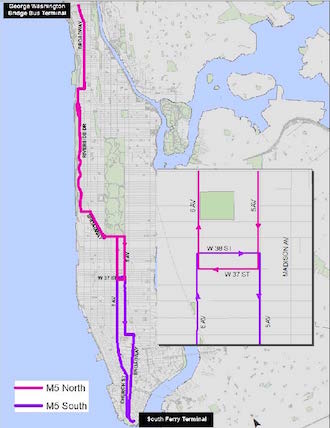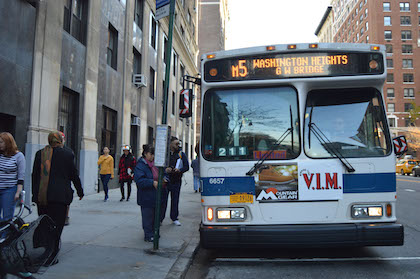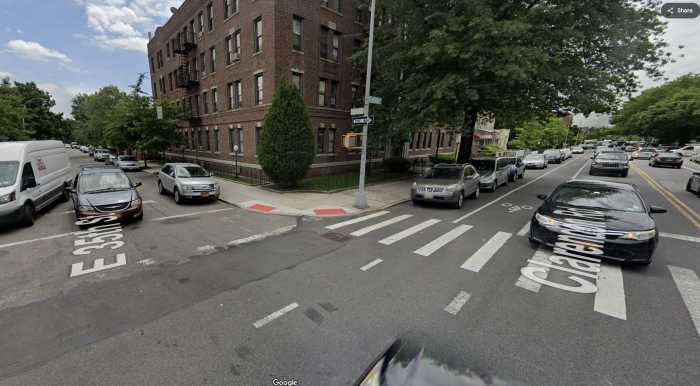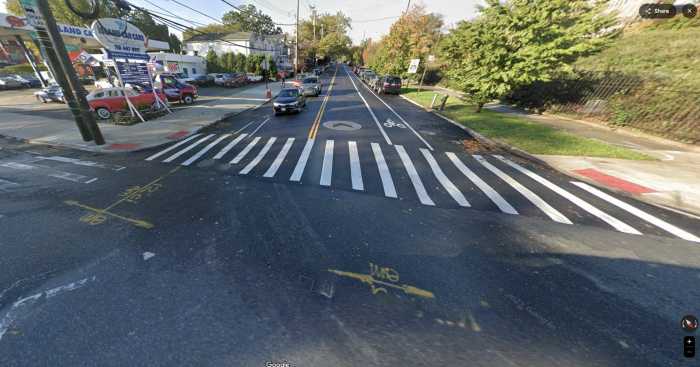
BY JACKSON CHEN | The Metropolitan Transportation Authority has proposed preliminary plans to split up the route of the chronically delayed M5 bus into northern and southern legs at West 37th and 38th Streets.
The M5 route, which stretches 12 miles from Washington Heights to Lower Manhattan — along Broadway, Riverside Drive, and Fifth Avenue southbound and Sixth Avenue, Riverside, and Broadway northbound — has frequent delays due to traffic, construction, and other operational issues, according to
an MTA associate staff analyst.
The combination of stressors for the bus route causes bottlenecking hotspots that range from the M5’s Midtown stops, portions of lower Broadway, and higher up at the George Washington Bridge Bus Terminal, she said.
“What happens with these bottlenecks is a cascading effect of delays,” Azze-Singh explained. “The later a bus arrives to its terminal, the later it is leaving that terminal, so customers are impacted in both directions.”
For the MTA, the root of the M5’s problems lies with the length of the route, which is the longest in Manhattan. The M5, which serves an average of 11,700 daily riders, has a concentrated ridership in Upper Manhattan and both of its end stops are public transportation hubs — the South Ferry Terminal and the George Washington Bridge Bus Terminal.
Joined by the agency’s assistant director of government and community affairs Zach Campbell, Singh presented the MTA’s initial plans to address the problematic route at a November 5 meeting of Community Board 5. The changes would split the M5 into northern and southern routes.
“The stats on this route show that it’s frequently one of the poorest performers in Manhattan,” Campbell said. “We think that this is a very practical way to improve bus service for the nearly 12,000 daily riders.”
According to the plans, the eight-mile M5 North route would start from the George Washington Bridge’s bus terminal and head southbound into Midtown. The M5 North, which is expected to serve 7,300 riders, would terminate at West 37th Street between Fifth and Sixth Avenues, before looping back north.
The shorter four-mile M5 South route would start from the Staten Island Ferry and continue northbound until West 38th Street between Fifth and Sixth Avenues, according to the plan. The M5 South, which is expected to serve around 2,800 riders, would then loop around back down to the ferry.

Supplementing the route split with more service on lower Broadway, the MTA also proposed a one-mile extension of the nearby M1 line — which runs southbound on Fifth Avenue and northbound on Fourth, Park, and Madison Avenues — south to Worth Street, before looping back to its current terminus at Astor Place. That additional M1 service, the MTA projects, would pick up 1,600 or more riders currently among the 11,700 passengers using the full M5 route.
Since the plans would chop the current M5 route, the MTA calculated that 14 percent of riders would have to transfer if they wanted to continue their M5 trip past the proposed split point.
Proposing an alternative split point for the MTA to consider, CB5 member Daly Reville suggested Columbus Circle, which she said was “a natural transit hub” and could connect bus riders to the subway.
Azze-Singh said Columbus Circle was one of the original locations studied but after researching the options, the 37th Street area was deemed to have the least overall impact on riders.
“By cutting it at Columbus Circle, you’d be forcing a lot of people to get off the bus,” Azze-Singh said. “There are going to be customers inconvenienced, but the balance for us becomes what can we operate well and try to minimize the inconvenience.
Among the 14 percent of riders who would face a Midtown transfer, Upper West Sider Paul Duckett, said the full length of the M5 is needed and that the city should consider alternatives.
“Trying to get across the city on these half-routed buses is difficult,” said Duckett, who rides the M5 several times a week. As a longtime city resident, Duckett added that he believes transit in the city has become unkind to its passengers.
“Some of the routes in the City of New York should be the full length of the territory,” Duckett said. “The number 5 should stay the way it is; they should return the number 10 to its original routing.”
Other residents said the inconvenience for long-distance riders are worth it for an improved M5.
“I’ve come to expect that the [M5] will run 5 to 10 minutes off schedule,” said Marc Phillips, who uses the route to commute daily from the Upper West Side to Midtown South. For Phillips, the route split at 37th and 38th Streets gives him an option to either transfer to the M5 South or walk down to his workplace at West 26th Street.
Overall, Phillips said his experience with the line has been positive and that the split would be beneficial to the majority of riders.
“If it would improve reliability and frequency of service, I’d be up for it,” Phillips said.
John Bacon, the director of planned giving for the New York Public Library, however, raised safety concerns about the proposed split point for the route’s two legs. Working in Midtown, he said, he commutes by Citibike from the Village.
“That’s my bike stop where the buses [would] turn on 37th Street,” Bacon said. “It’s a mess every morning and there’s usually traffic backed up into Fifth Avenue.”
Bacon said he would prefer overlapping other bus routes onto the Midtown section of the M5 to reduce the stress on that route, but the MTA contended that overlaps are limited by operational constraints and budgeting.
Since the proposed route split is still a preliminary proposal, the MTA is continuing to gather more input from community boards. Ultimately, the proposal goes to the MTA Board for a final vote.




























